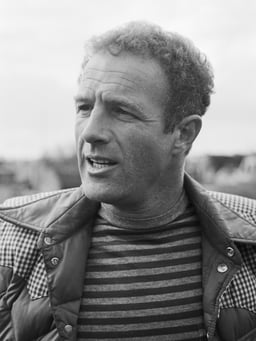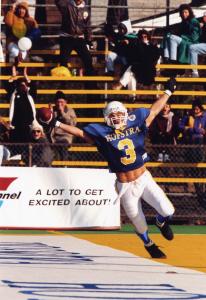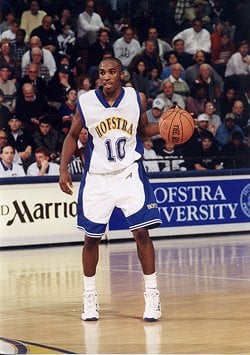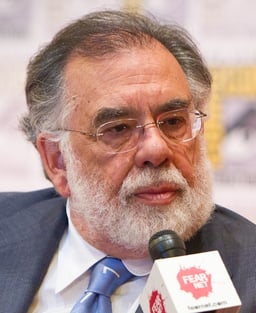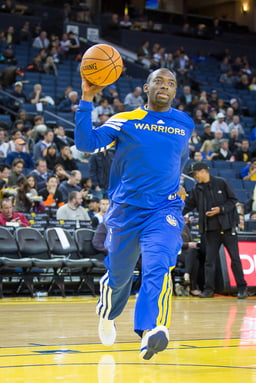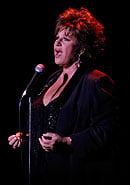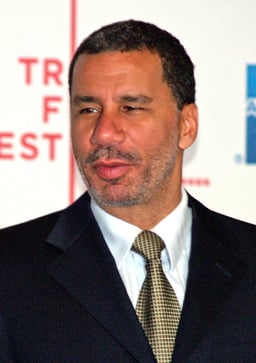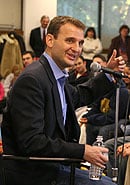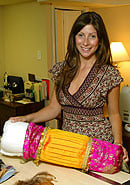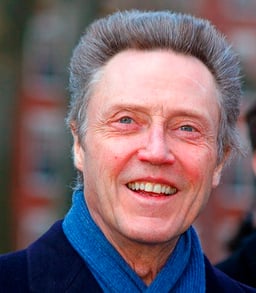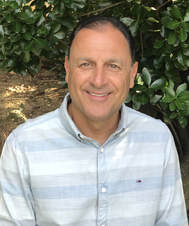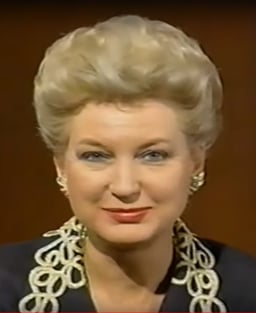Hofstra University
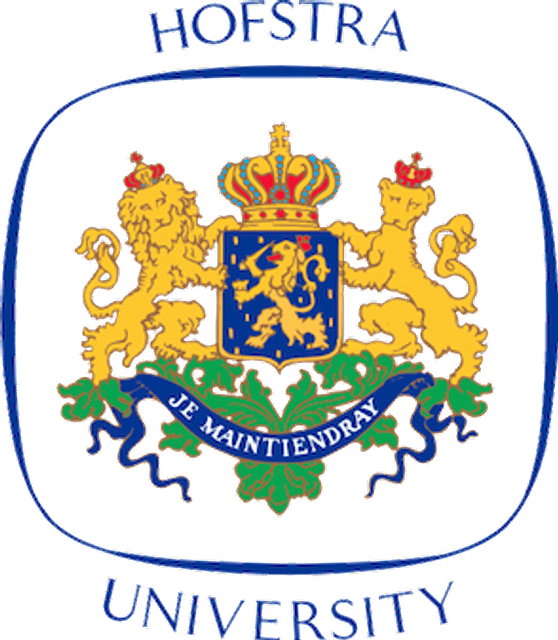
Hofstra University

| Hofstra CollegeNassau College-Hofstra Memorial of NYU at Hempstead, LI | |
| Motto | Je maintiendrai[1]French: "I stand steadfast" or "I shall maintain" |
| Type | Private |
| Established | 1935 |
| Endowment | $573.6 million[2] |
| Chairman | Alan J. Bernon |
| President | Stuart Rabinowitz |
| Provost | Herman Berliner |
| 3,381 | |
| Students | 10,871 (2018)[3] |
| Undergraduates | 6,701 |
| Postgraduates | 4,170 |
| Location | |
| Campus | Suburban, 244 acres (99 ha) |
| Colors | Blue, white, and gold[4] |
| Athletics | NCAA Division I–CAA |
| Nickname | ThePride(formerly Flying Dutchmen)[5] |
| Website | |
| University rankings | |
| National | |
| Forbes[21] | 292 |
| Times/WSJ[22] | 231 |
| U.S. News & World Report[23] | 162 |
| Washington Monthly[24] | 379 |
| Global | |
| Times[25] | 351–400 |
| U.S. News & World Report[26] | 927 |
Hofstra University is a private university in Hempstead, New York. Long Island's largest private university,[6] Hofstra originated in 1935 as an extension of New York University (NYU) under the name Nassau College – Hofstra Memorial of New York University at Hempstead, Long Island.[7] It became independent Hofstra College in 1939[8] and gained university status in 1963. Comprising ten schools, including the Northwell School of Medicine and Deane School of Law, Hofstra is noted for a series of prominent Presidential conferences and hosting several United States presidential debates.[9]
| Hofstra CollegeNassau College-Hofstra Memorial of NYU at Hempstead, LI | |
| Motto | Je maintiendrai[1]French: "I stand steadfast" or "I shall maintain" |
| Type | Private |
| Established | 1935 |
| Endowment | $573.6 million[2] |
| Chairman | Alan J. Bernon |
| President | Stuart Rabinowitz |
| Provost | Herman Berliner |
| 3,381 | |
| Students | 10,871 (2018)[3] |
| Undergraduates | 6,701 |
| Postgraduates | 4,170 |
| Location | |
| Campus | Suburban, 244 acres (99 ha) |
| Colors | Blue, white, and gold[4] |
| Athletics | NCAA Division I–CAA |
| Nickname | ThePride(formerly Flying Dutchmen)[5] |
| Website | |
| University rankings | |
| National | |
| Forbes[21] | 292 |
| Times/WSJ[22] | 231 |
| U.S. News & World Report[23] | 162 |
| Washington Monthly[24] | 379 |
| Global | |
| Times[25] | 351–400 |
| U.S. News & World Report[26] | 927 |
History

Hofstra's logo flag
| President | Tenure |
|---|---|
| Truesdel Peck Calkins | 1937–1942 |
| Howard S. Brower | 1942–1944 |
| John Cranford Adams | 1944–1964 |
| Clifford Lee Lord | 1964–1972 |
| James H. Marshall | 1972–1973 |
| Robert L. Payton | 1973–1976 |
| James M. Shuart | 1976–2001 |
| Stuart Rabinowitz | 2001–present |
The college – established as an extension of New York University (NYU) – was founded on the estate of a wealthy couple, a lumber entrepreneur of Dutch ancestry, William S. Hofstra (1861-1932) and his second wife, Kate Mason (1854–1933). The extension had been proposed by a Hempstead resident, Truesdel Peck Calkins, who had been superintendent of schools for Hempstead. In her will, Kate Mason provided the bulk of their property and estate to be used for a charitable, scientific or humanitarian purpose, to be named in honor of her husband. Two friends, Howard Brower and James Barnard, were asked to decide what to do with the estate. Calkins remarked to Brower that he had been looking for a site to start an institution of higher education, and the three men agreed it would be an appropriate use of the estate. Calkins approached the administration at New York University, and they expressed interest.
The college was founded as a coeducational, commuter institution with day and evening classes.
The first day of classes was September 23, 1935, and the first class of students was made up of 159 day and 621 evening students.
The tuition fee for the year was $375.
The college obtained provisional charter status, and its official name was changed to Hofstra College on January 16, 1937.
Hofstra College separated from New York University in 1939 and was granted an absolute charter on February 16, 1940.
Hofstra's original logo was a seal created by Professor of Art Constant van de Wall in 1937.
The insignia was derived from the official seal of the reigning house of the Netherlands, the House of Orange-Nassau. Used with the permission of the monarch of the Netherlands, the seal also included the Dutch national motto Je Maintiendrai, meaning “I stand steadfast” (literally “I shall maintain”) in French.
In 1939, Hofstra celebrated its first four-year commencement, graduating a class of 83 students.
The first graduates had strong feelings for the new institution.
When they were allowed to choose whether they would receive degrees from New York University or Hofstra, they overwhelmingly chose Hofstra degrees.
Academic recognition of Hofstra was affirmed when the Middle States Association of Colleges and Schools accepted Hofstra for membership on November 22, 1940.
Early in 1941 the college was elected to membership in the American Association of Colleges.
In 1950, Calkins Gymnasium was the site of the first Shakespeare Festival.
It was performed on a five-sixths-sized replica of the Globe Theatre.
The festival is now performed on the Globe Stage, the most accurate Globe Theatre replica in the United States.[10]
With the approval of the New York State Board of Regents, Hofstra became Long Island's first private university on March 1, 1963. Also in that year, the Board of Trustees resolved to make Hofstra architecturally barrier-free for individuals with physical disabilities, stating that all students should have access to higher education. This later became federal law, and Hofstra was subsequently recognized as a pioneer. Other forward-thinking programs and events followed, including the New Opportunities at Hofstra (NOAH) program, which was established the following year. NOAH is Hofstra's Arthur O. Eve Higher Education Opportunity Program.
In 1963, Mitchel Air Force Base was closed by the military and declared surplus property. The university asked for part of the area to be used for educational purposes, and was subsequently granted 110 acres (0.45 km2). Remnants of the concrete runways from the Air Force base are now parking lots for Hofstra's North Campus. The Hofstra University Museum was also established that year.
Hofstra Stadium served as the site of the first-ever NCAA Division I Men's Lacrosse Championship game in 1971.[11]
The university reorganized its divisions into “schools” in the 1960s.
Hofstra was authorized by the Board of Regents to offer its first doctoral degrees in 1966.
In 1968, the Hofstra Stadium became the first to install Astroturf outdoors in the East, and the New York Jets began holding their summer training camp to the North Campus, until 2008, when the Jets moved to Florham Park, New Jersey.
Campus
The Arboretum and Bird Sanctuary at Hofstra University has a collection of diverse trees and reflecting its Dutch origin, and displays an array of rare and colorful tulips in the Spring.[12]
There are 3,381 faculty members (including more than 2,200 in the school of medicine system),[13] 6,913 undergraduates, with a total of 11,240 students overall, including all full and part-time undergraduates, graduates, law and medical students.
The campus has approximately 117 buildings on 244 acres (99 ha).[3] The part of the campus located south of Hempstead Turnpike (NY Route 24) and west of California Avenue is located in the Village of Hempstead.
The part of the campus north of Hempstead Turnpike and east of California Avenue is located in Uniondale and East Garden City.
Hofstra also offers an MBA program as well as other classes in New York City from a center in Manhattan.[15][16] The campus is roughly 7 miles from the Borough of Queens in New York City, and you can see the entire New York City skyline from the 10th floor of the library.[17][18]
Academics
Hofstra was ranked tied for 162nd among national universities and named the 97th 'best value school' by U.S. News & World Report for 2020, with its undergraduate engineering program ranked tied for 32nd among schools where doctorates are not offered.[28] U.S. News also rated the online MBA program tied for 58th best and online graduate education tied for 69th best.[29]
The Hofstra University Honors College, whose admissions policy is more selective than that of the university as a whole,[30] offers rigorous educational opportunities for high-achieving students.
The School for University Studies provides a program for students whose abilities are not reflected in standardized test scores; while New Opportunities at Hofstra (NOAH) is designed for students whose educational progress to date has been restricted by limited educational opportunities or economic status.
In the fall of 2011, the university welcomed the first class of students in its new Hofstra Northwell School of Medicine. In 2012, it established its School of Engineering and Applied Science, featuring programs that partner with regional industry leaders,[31] and its School of Health Sciences and Human Services, housing a new master of public health program.[32]
The Hofstra Northwell School of Medicine was ranked #55 in primary care and #71 in research, according to U.S.
News & World Report, despite only being 2 years since its first class graduated.[33]
Hofstra University hosted the third and final 2008 presidential debate (between Barack Obama and John McCain) on October 15, 2008. The debate, the first presidential debate in New York since the 1960 debate between John F. Kennedy and then Vice-President Richard M. Nixon, focused on economic policy and domestic issues. It is remembered for McCain's introduction and frequent references to "Joe the Plumber".
Hofstra's successful bid to host this presidential debate in 2008 provided the springboard for a broad, campus-wide program called "Educate '08," featuring a year of free lectures, conferences and other events about politics and public policy.
The program featured national media and political figures as guest speakers, including George Stephanopoulos, Maureen Dowd, Ari Fleischer, James Carville and Mary Matalin. "Educate '08" gave way to "Define '09", a program which brought to campus various speakers to examine the impact of the historic election of the nation's first African-American president and the policy challenges facing the Obama Administration.
In September 2009, Hofstra University President Stuart Rabinowitz announced the appointment of two senior presidential fellows at the university's Peter S. Kalikow Center for the Study of the American Presidency: Republican strategist and former presidential advisor Edward J. Rollins and former Vermont governor, presidential candidate and Democratic National Committee Chairman Howard Dean.
In October 2011, the Commission on Presidential Debates announced it had chosen Hofstra for its second 2012 presidential debate on October 16, 2012, the "town hall" debate (between Barack Obama and Mitt Romney).[34] Hofstra University hosted the first 2016 presidential debate between Donald Trump and Hillary Clinton on September 26, 2016.[35]
Schools and colleges
Hofstra College of Liberal Arts & Sciences, also known as Hofstra College, or Hofstra College of Arts & Sciences[36]
Peter S. Kalikow School of Government, Public Policy, and International Affairs
School of Education
School of Humanities, Fine and Performing Arts
School of Natural Sciences and Mathematics
Frank G. Zarb School of Business
Honors College
The Lawrence Herbert School of Communication
School of Health Professions and Human Services
Fred DeMatteis School of Engineering and Applied Science
Maurice A. Deane School of Law
Donald and Barbara Zucker School of Medicine at Hofstra/Northwell
Hofstra Northwell School of Graduate Nursing and Physician Assistant Studies
Centers and institutes
Center for Children, Families and the Law
Center for Civic Engagement[37]
Center for Educational Access and Success (CEAS)
Center for Entrepreneurship
Center for Legal Advocacy
National Center for Suburban Studies
Center for Technological Literacy
Center for the Study of Higher Education
Center for the Study of Labor and Democracy (CSLD)
Hofstra University Cultural Center (HUCC)
Institute for Health Law and Policy
Institute for Real Estate
Institute for the Study of Conflict Transformation
Institute for the Study of Gender, Law and Policy
Institute for the Study of Legal Ethics
Long Island Studies Institute (LISI)
Center for the Study of International Financial Service and Markets
Peter S. Kalikow Center for the Study of the American Presidency
The Joan and Arnold Saltzman Community Services Center
Scott Skodnek Business Development Center (BDC)
Wilber F. Breslin Center for Real Estate Studies
Hofstra University Museum
Asia Center
Center for Climate Study
Center for Innovation
The Digital Research Center at Hofstra University
Hofstra University Bioethics Center
Institute for Forensic Linguistics, Threat Assessment, and Strategic Analysis at Hofstra University
Athletics
Hofstra University teams had the unofficial nickname of the Flying Dutchmen.[5] The school's official team name became "The Pride" in 2004, referring to a pair of lions which became the school's athletic mascots in the late 1980s. The Pride nickname evolved from the Hofstra Pride on- and off-campus image campaign that began in 1987, during the university's dramatic recovery and growth. This followed a financial crisis in the 1970s that forced the layoff of more than 100 employees. In 1977 Hofstra wrestler Nick Gallo won the 126 lb weight class at the NCAA National Championship and was a member of the 1976 and 1980 U.S. Olympic Freestyle Wrestling teams, he was also given the title "Most Outstanding Wrestler" in the 1977 NCAA Division I Wrestling Championships.[3] The school's revival was credited in large part to the man who led the university from 1976 to 2001—educator, government official and former Hofstra football star Dr. James M. Shuart. Hofstra Stadium, the school's main outdoor athletic facility, has been named James M. Shuart Stadium since 2002.
Prior to 2008, the New York Jets held summer training camp at their on-campus headquarters before moving to their new headquarters in Florham Park, New Jersey. The area has since been used for the construction of the medical school building, which was completed in 2015.[38]
On December 3, 2009, the university announced it was terminating the football program.
Under NCAA rules, any football players who chose to transfer to other schools were eligible to play immediately, and not subjected to normal residency waiting periods.
Scholarship-holders who wished to stay at Hofstra were permitted to keep their scholarships.[39] Funds previously used for the football program went into the creation of the medical school, and enhancing a variety of programs, including hard sciences and engineering.[40]
Hofstra Stadium is home to the New York Lizards, a professional lacrosse team in the Major League Lacrosse (MLL).
On February 26, 2011, Hofstra Senior Day, the university retired the basketball jersey number 22 to honor senior Charles Jenkins before the end of the season. Jenkins, the school's all-time leading scorer, ranked fifth in the nation at 23.3 points per game last season (as of 22 February 2011) and was the front-runner to win Colonial Athletic Association Player of the Year honors. "I think it's very rare," head coach Mo Cassara said by phone to reporter Jeff Eisenberg. "We have 25 other athletes that have had their numbers retired here at Hofstra, but none of them have ever been retired while they were still here at their last games. He's been such an integral part of this university on so many levels that we thought that was the highest honor we could give him." No other Hofstra athlete in any sport has received the same honor.[41]
The Hofstra University Pride Wrestling team competes in the Eastern Intercollegiate Wrestling Association, as wrestling is not supported by the Colonial Athletic Association.
Student newspaper
The Hofstra Chronicle is the only student newspaper of Hofstra University. Established in 1935 and supported by the student activity fee and advertising,[42] it is published in tabloid format 12 times each semester and once a summer.
Student radio station
The university operates Long Island's oldest public radio station, WRHU-FM (88.7). The noncommercial broadcaster was founded in 1950 as WHCH, a campus-limited station, and received its broadcast license on June 9, 1959, using the call letters WVHC. The station became WRHU (for Radio Hofstra University) in 1983. WRHU currently serves as the radio home of the Long Island Nets and New York Islanders, producing over 675 NHL broadcasts since 2010.[43]
The station was the first non-commercial radio station in history to receive a Marconi Award from the National Association of Broadcasters, and the only to receive two.[43] WRHU has been rated as the #1 college radio station in the nation by Princeton Review, College Media Association, and BestColleges.com.[43]
